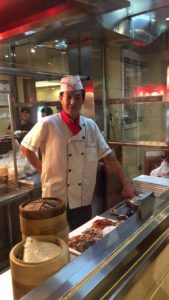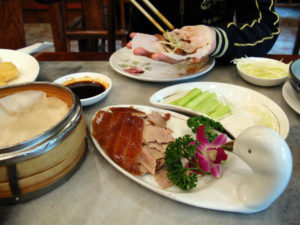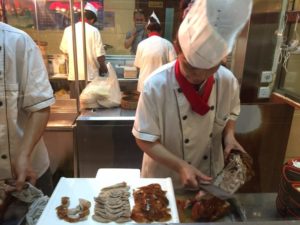 If you are going to Beijing, you definitely cannot miss out on Beijing Kaoya, a.k.a. Beijing roasted duck, my favorite Beijing dish. Originally a dish that was exclusively served to the emperors of China in the Ming Dynasty, Beijing Kaoya gained popularity among the affluent class of society during the Qing Dynasty, then among the rest of China during the 19th century to eventually become a quintessential Chinese dish that attracts not only Chinese locals but also tourists from all over the world. Since then Beijing Kaoya has not only become an iconic dish of Chinese cuisine, but also a part of the people’s national pride.
If you are going to Beijing, you definitely cannot miss out on Beijing Kaoya, a.k.a. Beijing roasted duck, my favorite Beijing dish. Originally a dish that was exclusively served to the emperors of China in the Ming Dynasty, Beijing Kaoya gained popularity among the affluent class of society during the Qing Dynasty, then among the rest of China during the 19th century to eventually become a quintessential Chinese dish that attracts not only Chinese locals but also tourists from all over the world. Since then Beijing Kaoya has not only become an iconic dish of Chinese cuisine, but also a part of the people’s national pride.
The most distinctive feature of Beijing Kaoya is its crispy skin that is served on top of thin slices of meat. Diners usually coat the skin with sugar and garlic sauce to enjoy the combination of crisp, sweet, and sour. At the same time, diners also wrap the meat pieces in a small steamed crepe (chūn bǐng) with thin slices of cucumber, spring onion, a sweet bean sauce and devour the wrap by hand.

The dish utilizes every part of the duck; nothing goes to waste when preparing Beijing Kaoya! After the skin and the meat have been trimmed, the remaining parts of the duck (bones, fat, tendons, etc.) are usually used with ginger and a kind of vegetable to make a tasty broth, which is served at the end of the meal. I especially like the broth because it washes away the after-taste of duck skin at the end.

Beijing Kaoya is also special for its preparation and presentation process. After the duck has been hand-plucked and washed, air is pumped underneath the duck’s skin to perfectly separate its skin from its fat layers. This process is crucial to prevent the skin from tasting like fat, a crucial characteristic of the dish. Then the duck is soaked in boiling water, glazed in maltose syrup, and hung to dry on a rack for 24 hours before being roasted in a brick oven. I was surprised to learn from my server that the preparation method of Beijing Kaoya has not changed at all since it was served to Chinese emperors in the 14th century.

Diners may also find the presentation process exciting. A server would present the whole roasted duck on a cart, trim the skin, slice the meat, and organize the goods on a plate right before their eyes.